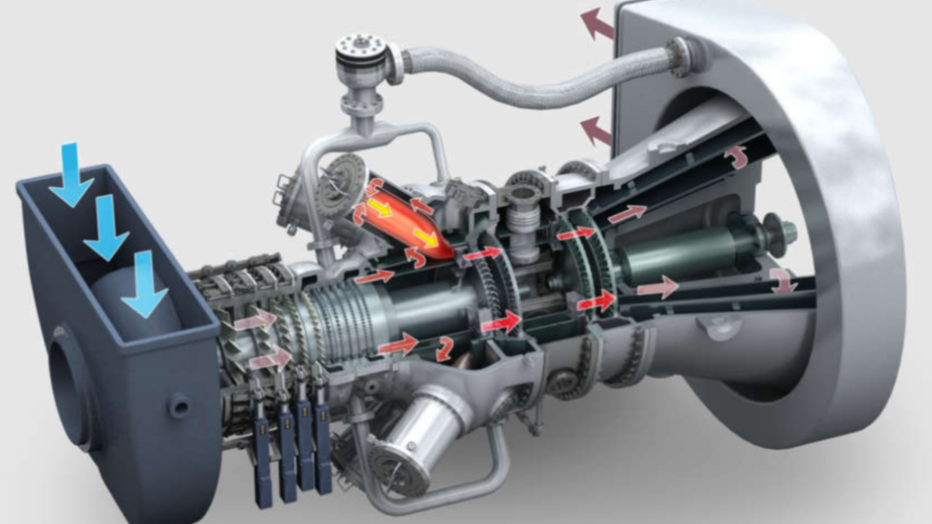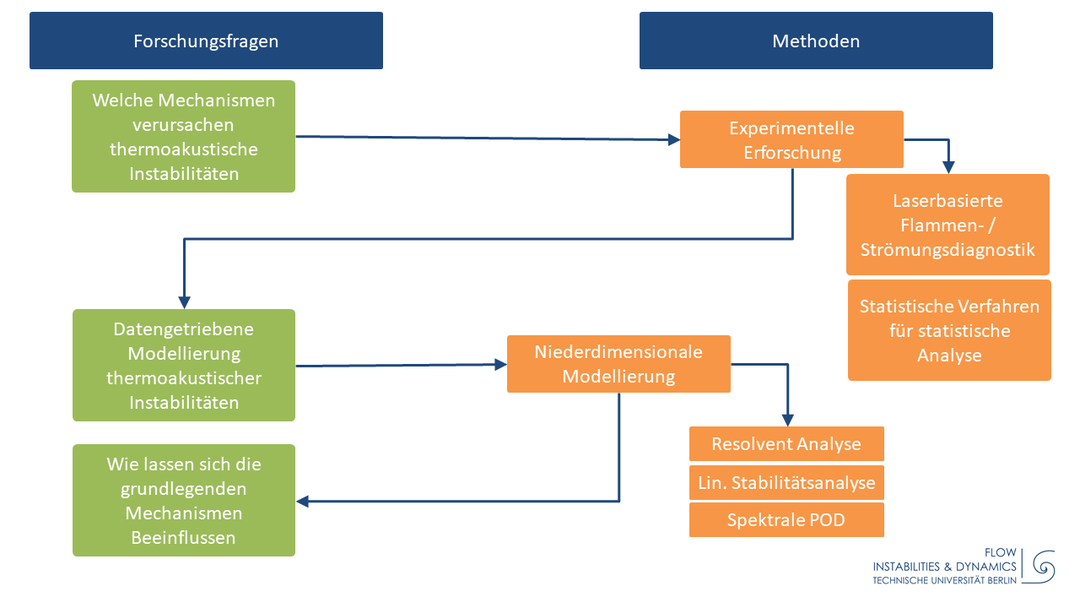Data-driven modelling of physical mechanisms in combustion chambers
Background

Within the framework of the AG Turbo, the Robust Turbomachinery for Flexible Use (RoboFlex) group at TU Berlin is working on the further development of gas turbine combustors to meet new requirements. The gas turbines, which were originally designed for one operating point, are facing new modes of operation in conjunction with renewable energies in order to compensate for grid fluctuations and ensure security of supply. Not only is the number of start and stop cycles for existing power plants increasing, but the demanded operational range is constantly increasing with fuel and load flexibility being among the main drivers. This change in operation results in new requirements for the combustion process in the machines. The group's work is divided into three subprojects that address these objectives using different approaches.
This subproject deals with the experimental investigation of the coupling of acoustics and flame dynamics, which can lead to self-amplifying thermoacoustic instabilities. To describe the stability of the combustion process, this interaction is typically described by the flame transfer function, which is used in acoustic network models.
However, the flame transfer function represents a black-box approach, since the individual mechanisms of action of the heat release fluctuations as well as their interaction are not resolved. Furthermore, a thermoacoustic characterization of the flame is necessary for the calculation of the flame transfer function, which involves very complex measurement campaigns - especially for industry-relevant geometries.
Methods

In this project, a white-box approach is pursued, which experimentally identifies the individual mechanisms that contribute to fluctuations in heat release.
For the experimental investigation of thermoacoustic instabilities, an appropriately equipped test rig with industrial combustion chamber geometry is available within the scope of the subproject.
By using high temporal resolution laser-based flame and flow diagnostics, the interaction of hydrodynamic fluctuations with fluctuations of the heat release can be brought together. Data-driven methods will be used to spatially resolve the different physical mechanisms and describe their dynamics, resulting in a deeper understanding of the complex relationship. Targeted parameter studies allow the influences of boundary conditions, such as premixing or fuel composition, to be quantified. The obtained flow and flame data are also used for the validation of numerical simulations.
Low-dimensional modeling using various methods, such as spectral POD, resolvent or linear stability analysis, allows the individual dynamics to be described using just a few parameters.
Since the test rig can also be equipped with acoustic measurement technology, flame transfer functions for different parameters are also recorded, which can be used as a benchmark for the modeling.
From the modeling, parameters can be derived which have a large effect on the fundamental mechanisms, so that these can be specifically influenced. This will result in optimizations that can increase the required operating flexibility in future gas turbines.
Results

The flame transfer function (FTF) usually used for modeling represents the interplay of different physical mechanisms of action, left figure. In a first investigation, the role of hydrodynamic instabilities in relation to the global heat release fluctuations was illuminated. For this purpose, the flow was acoustically excited and time-resolved measurement techniques were used to record the flame dynamics. Phase averaging allows the two-dimensional representation of the flame response to the acoustic excitation.
Analogously, the natural, i.e. non-excited, flame and flow dynamics were recorded. Using spectral POD, the same flame dynamics could be found in the natural flow as in the acoustically excited flow for some frequencies, middle figure. Under certain conditions, hydrodynamic instabilities in the natural flow provide the same flame dynamics as in the acoustically excited case. This suggests that the interaction of flow and flame can be studied without elaborate acoustic measurements.
In a further step, extended spectral POD was used to calculate the heat release fluctuations caused by the hydrodynamics. By correlating (aligning) these with the global dynamics of the heat release, frequency ranges could be identified in which the hydrodynamic fluctuations represent the main mechanism of action for the flame dynamics - in ranges with high alignment.


